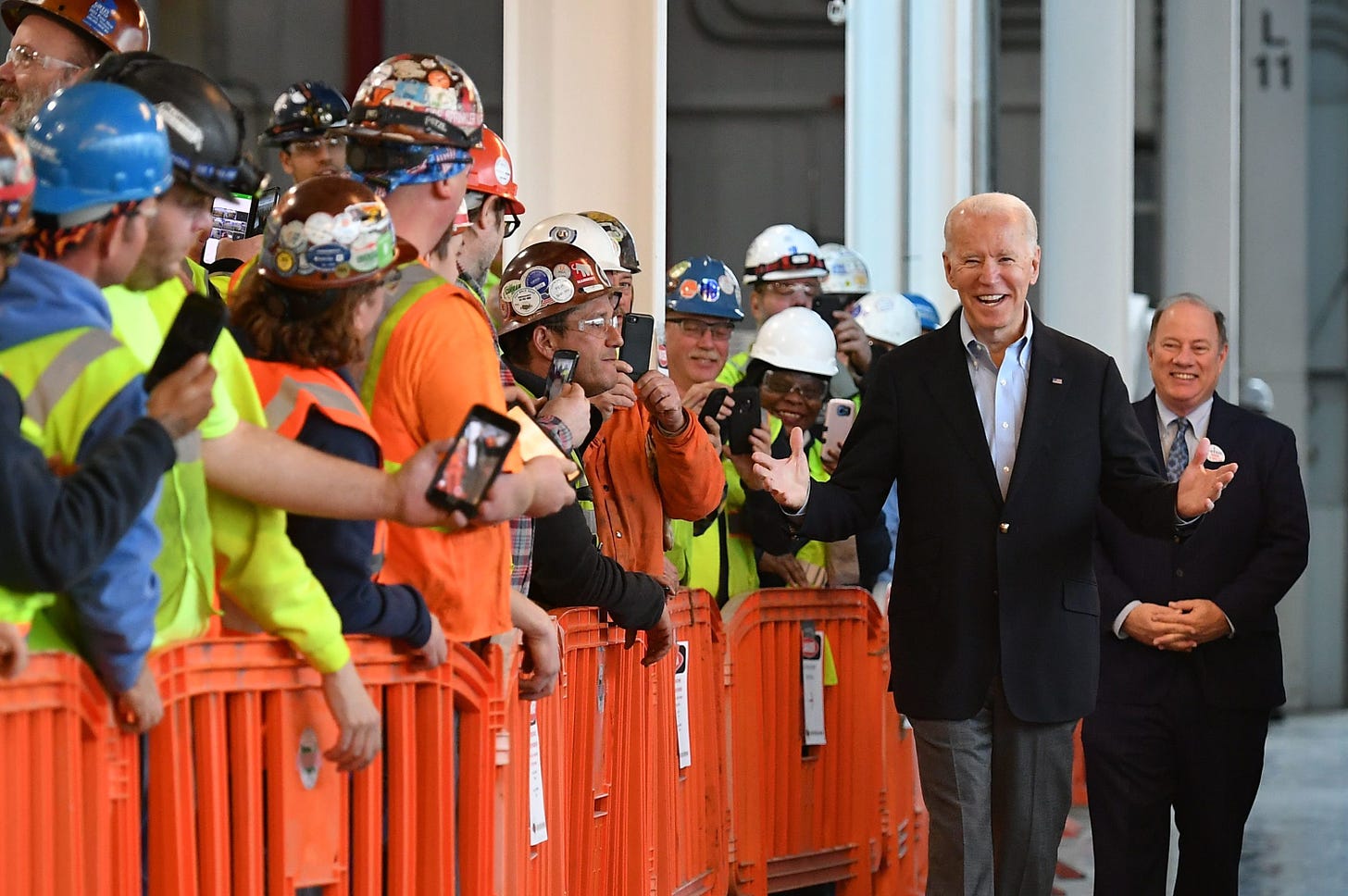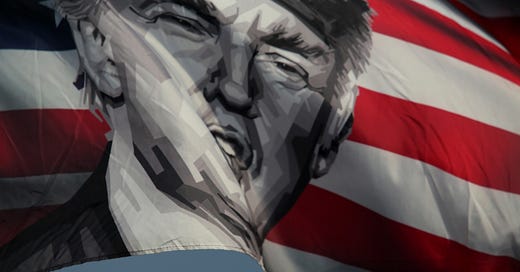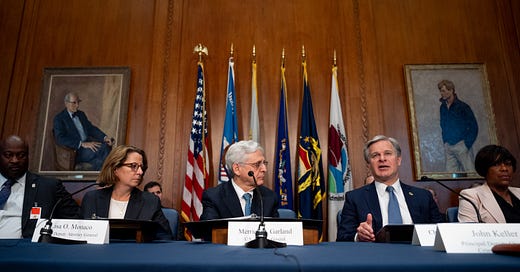
Discover more from The Bulwark
When it Comes to the Midwest, Polls Aren't Everything
How the history of the "Rust Belt" will impact the 2020 election.

Political polling is an art as much of a science. Interpreting it is a delicate task. Analysts and the media can sometimes fall into the trap of a “mile wide and an inch deep.” Which is a way of saying that polling, and its revelations, have no real staying power--public opinion can be mercurial. It is better to know the bottom-up details than the top-down theories.
We are seeing this in real-time as analysts act like Maricopa County in Arizona and Fort Bend County in Florida and Cobb County in Georgia are the same as Waukesha County in Wisconsin and Lake County in Ohio and Oakland County in Michigan.
They are nowhere near similar and how these Midwest counties vote will have a big impact on the results of the 2020 presidential election.
That “mile wide and an inch deep” got its start from the Platte River in Nebraska. In the mid-1800s, investors from the eastern side of the country had looked at maps and figured that this 450-mile river from Omaha to Scottsbluff could be reconfigured to run barges and steamboats and even schooners to haul people and goods out west. But that never happened for one reason: The Platte River is a muddy, wide, shallow, meandering stream with a swampy bottom, and these characteristics made it too difficult to ever be used as a major navigation route.
The old fur trappers and ranchers knew that, but those looking at it from far away didn’t. They thought all rivers are the same.
The media interpretation of the way voters in the Midwest states are leaning right now is evidence that way of thinking persists.
There are several things about these Midwest suburban counties, Maricopa, Fort Bend, Cobb, Waukesha, et. al., that make them outliers in the political game. The first is their history and how the citizens of these suburban communities got whacked in the past in so many ways.
In 1980, the manufacturing jobs downward spiral officially began and the term “Rust Belt” was coined. The 1981-82 recession was the worst economic downturn in the United States since the Great Depression, with a 14 percent unemployment rate that hit the Midwest harder than other parts of the country. If you were born in 1960 – and are 60 today – you faced a barren job market when you graduated school.
In the 70s and 80s, many Midwest cities were dealing with school desegregation through some form of busing. In big cities like Milwaukee and Detroit and Cleveland, white people moved to the suburbs or put their kids in Catholic schools. But the reality of this mess was that the black population didn’t like the busing either; instead of busing their kids to white schools, many thought there were better possible solutions.
From the 1990s until now, this region has also dealt with a higher addiction with opioids, with the foreclosure recession hitting this area earlier and lasting longer, and the COVID-19 has played out that way as well: Milwaukee and Detroit got hit hard four months ago and it looks like it is coming back.
The result of these waves of adversity is a tribal protectionism unique to the Midwest. These are the people Trump is talking to when he boasts protecting the “suburban dream.”
Republican pollster Frank Luntz has said that one problem for Trump is that he is talking about problems—violence, rioting—rather than the solution: public safety. “Donald Trump is talking about the right topics but using the wrong language,” he says.
There is a cross-current among voters in Midwest: they support the police, but they also support the racial justice protests and believe the country needs better law enforcement accountability.
Former Trump spokesperson Kellyanne Conway said in late August during a Fox News interview that "The more chaos and anarchy and vandalism and violence reigns, the better it is for the very clear choice on who's best on public safety and law and order," during an interview on Fox and Friends. But will this line of reasoning play well with people in the Midwest who have been dealing with racial segregation and affirmative action issues for more than 50 years?
One way to get better details on why this is playing out the way it is, is to look at who is living in these suburbs. First, the people who live in the Midwest are from there, born in the state they live mostly, with Pennsylvania, Ohio, Michigan and Wisconsin all having around a 75% of the population from there, 25% from out of state ratio (by contrast, Nevada, Florida and Arizona are in the 40/60 range).
The Midwest population is also older, and more middle-class, and they’re home values much less than the national average. These states are whiter than the national average as well, and don’t have much foreign-born citizenry any more (the four states have less than half the 13.5% national foreign-born average).
They also own lots of boats, as there are 4,530 miles of U.S. coastline for the five Great Lakes.
But Trump doesn’t seem to be paying attention to the groups he needs to win. “While many are looking for signs that Trump is filling in cracks in his base,” Cooke Political Report analysts Amy Walter wrote recently, “Trump's real problem is much deeper. Trump is trailing, not because he's losing his 2016 base, but because he has never expanded beyond it.”
There are two things that have been steady that make the law and order arguments by Trump somewhat preposterous in the Midwest. Crime has been down nationally for a long time, and the suburbs surrounding the big cities in the Midwest have been white for a long time -- and with very little change since 2000.
Kenosha County, Wisconsin – where the latest police brutality protests are taking place -- is a perfect example. According to the Federal Reserve, violent and property crime have dropped more than 50% in Kenosha County between 2008 and 2018. Crimes in the more urban Milwaukee County up the road have dropped by about 30% during a similar period.
Kenosha County is also still very white. In 2000, the county had a population ratio of 88% white and 5% African-American. In 2019, the county is 87% white and 7% African-American. The Wisconsin “WOW” counties around Milwaukee (Waukesha, Ozaukee and Washington) are similar, going from high 90s percentile white and one percent black in 2000, to mid-90s percentile white and two percent black in 2019. Most of the counties around Detroit, Cleveland and Pittsburgh are the same.
Over the next few weeks, it is likely the Midwest sensibility will continue. Biden has been leading in these state polls by close to the same amount (except Ohio) since June 1. One reason is the voters in these states are likely seeing that placing importance on high crime rates and racial unrest doesn’t make sense for them, when they live in low crime rate counties with low minority population.
Some Republicans consultants have said that the economy still could be will be Trump’s saving grace in these suburbs, but that is uncertain given that COVID-19 is still very much at play with almost 200,000 deaths.
What makes these Midwest suburban voters different is that the real issues they face today -- racism, police abuse, economic shift from manufacturing to the service sector, social media censorship and conspiracy theory craziness moving in -- they have faced before in the past in various formats. And they are getting tired of the nonsense. Solutions have been pushed on them in recent years by elitist academics from both political sides giving their views from 30,000 feet. But those who live in these Great Lakes states have a better understanding of what will, and what will not work, where they live.
Washington Post’s Bob Woodward’s new book is likely going to keep the COVID-19 issue high in the Midwest. “You just breathe the air and that’s how it’s passed,” Trump said in a Feb. 7 call to Woodward. “And so that’s a very tricky one. That’s a very delicate one. It’s also more deadly than even your strenuous flu.”
“This is deadly stuff,” the president repeated for emphasis.
But while Trump said on Friday that the U.S. was "rounding the final turn” in Covid-19 case declines, the number of people testing positive in Wisconsin were hitting record levels last week. The Badger State had the second-highest single-day count of new cases on Friday with 1,369, coming close to breaking the record set the day before (1,547).
According to the recent projections by the University of Washington epidemiologist researchers, about 70,000 more Americans will die from COVID-19 by election day. Of the four Midwest swing states, about 5,000 more will die by election day, adding to the 25,000 already dead.
Voters won’t be able to hide from this, especially in swing states that have a high number of elderly and practical people. How much death is the President willing to “downplay”? How much are we willing to let him?










